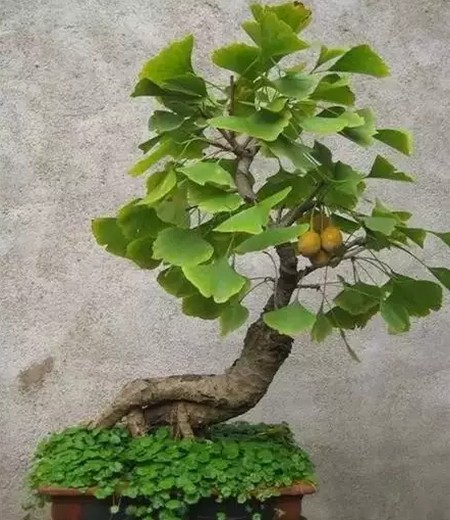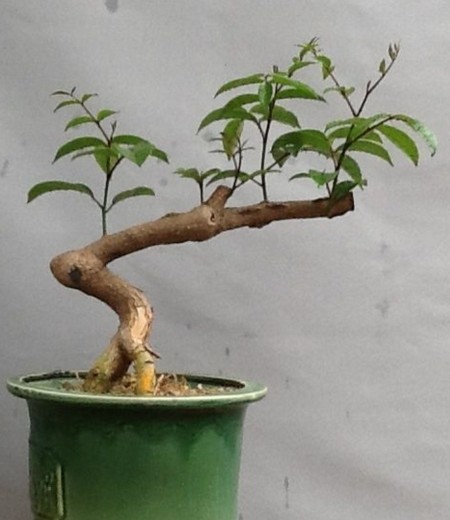Key points of bonsai production of Chinese mosquito mother
Chinese mosquito mother, low trunk, its shape is different, green leaves, evergreen, is the production of bonsai excellent tree species, very precious, if put in a pot indoors, very elegant and cultivated owner. It is drought tolerant, waterlogging tolerant, pruning tolerant, shade tolerant, less pests, small leaves, evergreen, except Heilongjiang Province, Jilin Province can adapt to cultivation.

Mosquitoes can be propagated by cuttings in spring and summer, and can also be propagated by sowing in spring. When the seedlings grow to the right size, shape them. Can also grow for many years plant short, vigorous old mosquito mother old pile production bonsai, generally in the spring before germination or rainy season transplanting, transplanting before the stump for a rough cut, cut off excess branches, roots should also be properly trimmed, cut off too long taproot, more lateral roots and fibrous roots, dig after the preservation of moisture work, first planted in the pot or underground "green", such as survival after modeling, and moved into the pot to watch.
Mosquitoes have flexible branches, strong germination force and pruning resistance, which are suitable for making bonsai in different forms such as straight dry type, curved dry type, inclined dry type, dry type, double dry type, cliff type and water type. The crown of Chinese mosquitoes with smaller leaves and Chinese mosquitoes with smaller leaves is often processed into regular cloud sheet shape, while the crown of Chinese mosquitoes with larger leaves and Chinese bayberry mosquitoes is mostly made into natural and elegant shape. The processing method adopts tying and shearing.
The young trees should be shaped step by step according to the design, and pay attention to the cultivation and promotion of roots, so that the root is exposed claws, in order to show its simplicity and variety. For the old piles that have grown for many years, we should make the best use of the original shape of the stump according to the pile shape, supplemented by pulling, winding, pruning and other means to highlight its natural beauty.
Key points of production:
1) Digging: Same as usual.
2) Pile repair: pile repair once in place, leveling branches, roots and wounds, sealing. soak in disinfectant and root promoter for 5-8 hr.
3) green: loose soil, disinfection. Fur piles and sand are better. Shallowly planted, soaked to the roots. Create microclimate according to habit. Initial shading.
4) Upper basin: one week before the beginning of autumn, loosen the soil with slightly acidic pine and place it according to its habits.
5) Modeling: according to the material. Trunking, pruning and binding are combined. Both are released.
Time: 2019-05-26 Click:
- Prev

Production technology of bonsai of ginkgo biloba
Ginkgo hanging fruit bonsai can be divided into: one branch alone (single branch), two wings flying (two branches), and three tripods (three branches). As the saying goes: if you have children, you will not plant ginkgo orchards, which means that only grandchildren can benefit from ginkgo trees. It can be seen that ginkgo trees grow slowly and bear fruit late. Generally speaking, the forming result of ginkgo bonsai is slower and later.
- Next

The making method of Zanthoxylum nitidum bonsai
Zanthoxylum nitidum gets its name because of the thorns on both sides of its leaf midrib. It is a traditional Chinese medicine with the effect of clearing away heat and detoxification. It is commonly known as two back needles, Taurus, and is a green vine of Rutaceae. Because Zanthoxylum nitidum has excellent plant characteristics, such as graceful tree posture, evergreen all seasons, resistance to transplantation, easy survival and so on.
Related
- Fuxing push coffee new agricultural production and marketing class: lack of small-scale processing plants
- Jujube rice field leisure farm deep ploughing Yilan for five years to create a space for organic food and play
- Nongyu Farm-A trial of organic papaya for brave women with advanced technology
- Four points for attention in the prevention and control of diseases and insect pests of edible fungi
- How to add nutrient solution to Edible Fungi
- Is there any good way to control edible fungus mites?
- Open Inoculation Technology of Edible Fungi
- Is there any clever way to use fertilizer for edible fungus in winter?
- What agents are used to kill the pathogens of edible fungi in the mushroom shed?
- Rapid drying of Edible Fungi

